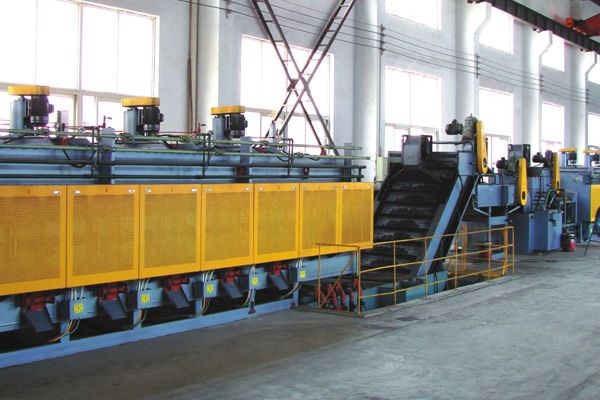Classification of Heating Furnaces
Classification by Heat Source
Heating furnaces can be categorized based on their heat source, which primarily includes resistance furnaces and fuel furnaces. Fuel furnaces, in turn, can be further divided into coal, oil, and gas furnaces. Each type of furnace has its unique characteristics and applications, determined by the nature of the heat source it employs.
Resistance furnaces, which utilize electrical resistance to generate heat, are currently the most widely used type. They are favored for their precise temperature control, energy efficiency, and versatility in various industrial applications. On the other hand, fuel furnaces, powered by fossil fuels such as coal, oil, or gas, offer higher thermal output and are typically used in processes requiring large amounts of heat.
| Heat Source Type | Primary Applications | Key Advantages |
|---|---|---|
| Resistance Furnace | Precision heat treatment, small to medium batch sizes | Precise temperature control, energy efficient |
| Coal Furnace | Heavy industrial processes, large-scale operations | High thermal output, cost-effective fuel |
| Oil Furnace | Industrial processes requiring moderate to high temperatures | Flexible fuel options, reliable performance |
| Gas Furnace | Various industrial applications, particularly where gas is readily available | Clean combustion, easy to control |
Understanding the classification by heat source is crucial for selecting the appropriate furnace type, ensuring optimal performance and efficiency in heat treatment processes.
Classification by Working Temperature
Heating furnaces can be classified based on their operating temperature, which significantly influences the type of materials they can process and the specific heat treatment processes they can perform. This classification is crucial for selecting the appropriate furnace for a given application, ensuring that the material properties are optimized without compromising structural integrity.
High-Temperature Furnaces
High-temperature furnaces operate within the range of 1000 to 1300°C. These furnaces are essential for processes requiring extreme heat, such as the melting of certain metals or the sintering of ceramics. They are often used in industries like metallurgy and advanced materials manufacturing, where high temperatures are necessary to achieve the desired material transformations.
Medium-Temperature Furnaces
Medium-temperature furnaces function between 650 and 1000°C. This range is particularly suitable for heat treatments like annealing, normalizing, and hardening, which require controlled heating and cooling to modify the mechanical properties of metals. Medium-temperature furnaces are versatile and widely used in various manufacturing sectors, including automotive and aerospace.
Low-Temperature Furnaces
Low-temperature furnaces operate below 650°C. These furnaces are ideal for processes that do not require extreme heat, such as stress relieving, tempering, and certain types of annealing. They are commonly used in industries where maintaining the dimensional stability and reducing internal stresses in materials are critical, such as in precision engineering and electronics.
| Furnace Type | Temperature Range | Typical Applications |
|---|---|---|
| High-Temperature Furnace | 1000-1300°C | Melting metals, sintering ceramics |
| Medium-Temperature Furnace | 650-1000°C | Annealing, normalizing, hardening |
| Low-Temperature Furnace | <650°C | Stress relieving, tempering, precision annealing |
Understanding the temperature classification of heating furnaces is vital for optimizing heat treatment processes, ensuring product quality, and enhancing operational efficiency.
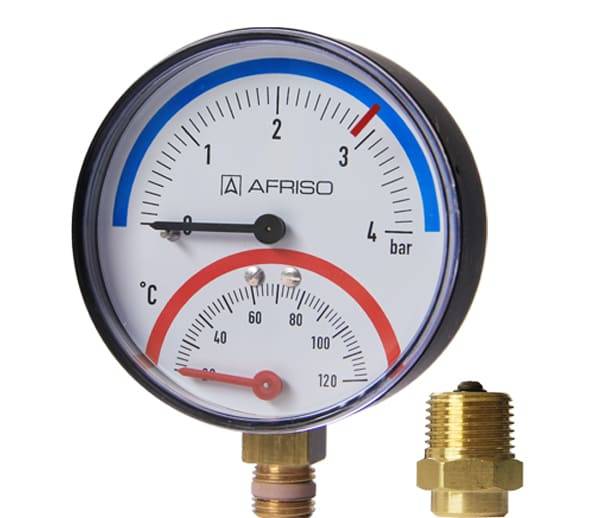
Classification by Heating Medium
Heating furnaces are versatile tools in the realm of heat treatment, each designed to cater to specific requirements based on the heating medium within the furnace chamber. This classification helps in tailoring the heat treatment process to meet the unique demands of various materials and applications.
-
Air Furnace: Utilizes ambient air as the heating medium, making it one of the most straightforward and widely used types of furnaces. It is particularly effective for processes that do not require a controlled atmosphere, such as general annealing and normalizing.
-
Controlled Atmosphere Furnace: This type of furnace is designed to maintain a specific gas composition within the chamber, which can range from inert gases like argon to reactive gases like hydrogen or nitrogen. Controlled atmosphere furnaces are essential for processes like carburizing, nitriding, and bright annealing, where the composition of the atmosphere directly influences the material's properties.
-
Bath Furnace: Operates by immersing the workpiece in a molten salt or metal bath, providing rapid and uniform heating. This method is particularly useful for processes requiring precise temperature control, such as hardening and tempering. Bath furnaces can be further classified into salt bath and metal bath furnaces, each with its unique advantages and applications.
-
Fluidized Particle Furnace: Uses a bed of fine particles, typically sand or ceramic, which are fluidized by a gas stream to provide a uniform heating environment. This type of furnace is ideal for processes requiring uniform heat distribution, such as sintering and heat treatment of powders.
-
Vacuum Furnace: Operates in a vacuum environment, minimizing the risk of oxidation and contamination. Vacuum furnaces are indispensable for high-precision applications, such as the heat treatment of aerospace components and medical implants, where maintaining surface integrity is critical.
-
Ion Nitriding Furnace: Specializes in the nitriding process, where nitrogen ions are introduced into the surface of the workpiece to enhance its hardness and wear resistance. Ion nitriding furnaces offer significant advantages over traditional gas nitriding, including shorter processing times, reduced part deformation, and the ability to precisely control the depth of the nitrided layer.
Each of these heating mediums brings unique capabilities to the heat treatment process, enabling manufacturers to optimize the properties of their materials for specific applications.
Classification by Process Use
Heating furnaces can be categorized by their specific process use, each designed to achieve distinct metallurgical transformations. These specialized furnaces include:
-
Normalizing Furnace: Used to refine the grain structure of steel by heating it above the critical temperature, holding it at that temperature, and then allowing it to cool in still air. This process enhances the mechanical properties of the steel.
-
Annealing Furnace: Designed to reduce hardness, improve machinability, and eliminate internal stresses by heating the metal to a specific temperature, holding it, and then cooling it slowly. Annealing can also improve ductility and electrical conductivity.
-
Quenching Furnace: Employed to harden steel by heating it above the critical temperature, holding it, and then rapidly cooling it in a quenching medium such as water, oil, or air. This rapid cooling creates a martensitic structure, significantly increasing hardness and strength.
-
Tempering Furnace: Used to reduce brittleness and improve toughness in quenched steel by reheating it to a lower temperature, holding it, and then cooling it. This process relieves internal stresses and improves the overall balance of hardness and toughness.
-
Carburizing Furnace: Designed to increase the carbon content near the surface of low-carbon steel, enhancing surface hardness and wear resistance. The steel is heated in a carbon-rich atmosphere, allowing carbon to diffuse into the surface layers.
-
Nitriding Furnace: Used to introduce nitrogen into the surface of steel at elevated temperatures, creating a hard, wear-resistant surface. Nitriding can be performed in gas or ion-nitriding furnaces, with ion nitriding offering advantages such as shorter processing times and reduced part deformation.
-
Carbonitriding Furnace: Combines the processes of carburizing and nitriding, introducing both carbon and nitrogen into the surface of steel. This dual-process enhances surface hardness, wear resistance, and fatigue strength, making it suitable for components subjected to high stresses and wear.
Each of these furnaces plays a crucial role in the heat treatment process, tailored to achieve specific metallurgical objectives that enhance the performance and durability of various steel components.
Classification by Furnace Type
Heating furnaces, integral to various industrial processes, can be classified by their type into several categories, each designed to meet specific operational requirements. The box-type furnace is a versatile option, often used for batch processing of small to medium-sized parts. Its enclosed design ensures uniform heat distribution, making it suitable for tasks like annealing and normalizing.
Another common type is the pit-type furnace, which is typically used for larger workpieces that require long heating cycles. This type of furnace is embedded in the ground, providing a stable and efficient heating environment for processes such as annealing and quenching.
The trolley furnace is designed for continuous operation, where trolleys carrying workpieces move through different heating zones. This setup is ideal for mass production scenarios, ensuring a steady flow of processed materials.
For applications requiring precise control over the movement of workpieces, pusher-type furnaces and conveyor belt furnaces are employed. These furnaces push or convey parts through the heating zones, ensuring consistent treatment throughout the process.
Additionally, turn-bottom furnaces and vibration bottom furnaces offer unique advantages. The former allows for 360-degree rotation of the workpiece, ensuring uniform heating, while the latter uses vibration to facilitate the movement of materials, making it suitable for delicate or powdered materials.
Each type of furnace has its own set of advantages and is chosen based on the specific needs of the industrial process, ensuring optimal performance and efficiency.
Classification by Operation Mode
Heating furnaces can be categorized by their mode of operation into three primary types: cyclic operation furnace, semi-continuous operation furnace, and continuous operation furnace. Each type is designed to meet specific production needs and operational requirements.
-
Cyclic Operation Furnace: This type of furnace operates in cycles, typically involving loading, heating, holding, and cooling phases. Cyclic operation furnaces are often used for small batch production or when the heating process requires precise control over temperature and atmosphere. They are versatile and can be adapted for various heat treatment processes such as annealing, normalizing, and quenching.
-
Semi-Continuous Operation Furnace: As the name suggests, semi-continuous operation furnaces combine elements of both cyclic and continuous operations. They allow for intermittent charging and discharging of materials while maintaining a relatively steady operation cycle. This mode is particularly useful for medium-scale production where flexibility and efficiency are both important.
-
Continuous Operation Furnace: Continuous operation furnaces are designed for high-volume production, allowing for the continuous movement of materials through the heating process. These furnaces are ideal for mass production scenarios where parts need to be heated, held, and sometimes cooled in a continuous flow. They are commonly used in industries requiring repetitive and high-throughput heat treatment processes.
Understanding these operational modes helps in selecting the most appropriate furnace for specific production needs, ensuring optimal efficiency and effectiveness in heat treatment processes.
Features and Uses of Commonly Used Resistance Furnaces
Salt Bath Furnace
A salt bath furnace employs neutral salt as its heating medium, distinguishing itself into two primary types: external heat and internal heat. This versatile furnace is capable of operating across a broad temperature spectrum, ranging from 150°C to 1350°C, making it suitable for a variety of heat treatment processes such as quenching, tempering, and local heating.
The salt bath furnace is particularly adept at specialized processes like carburizing, carbonitriding, and nitrocarburizing. Its design typically encompasses several critical components: the heating element, insulated chamber, and temperature control system. The heating element is responsible for melting the salt and maintaining the requisite temperature, while the insulated chamber ensures both heat retention and safety. The temperature control system allows for precise adjustments, enabling the furnace to cater to different heat treatment requirements with accuracy.
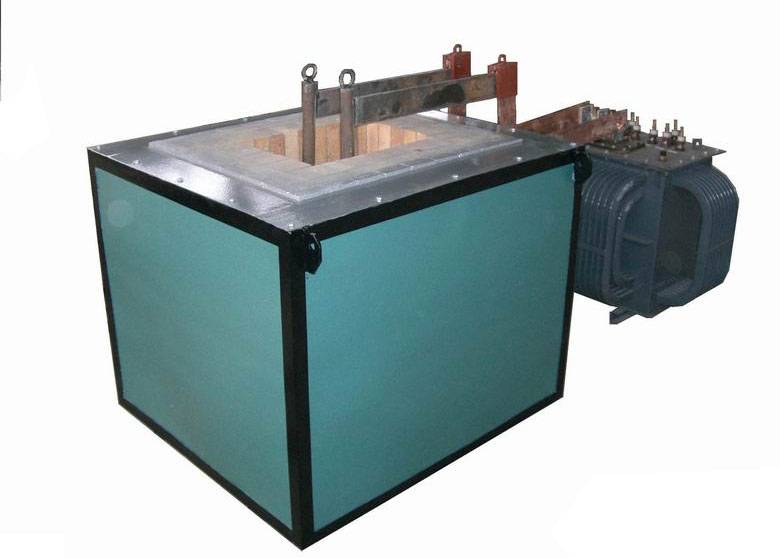
One of the standout advantages of a salt bath furnace is its ability to provide rapid and uniform heating through direct contact between the molten salt and the workpiece. This direct interaction results in consistent and predictable heat treatment outcomes. Additionally, the salt bath creates a protective atmosphere, reducing oxidation and making the furnace ideal for treating small and intricate parts through easy immersion. The even temperature distribution throughout the bath ensures uniform heat treatment across all parts of the workpiece, enhancing the overall quality and reliability of the process.
Box-Type Resistance Furnace
Box-type resistance furnaces are versatile electric heating devices, classified by their operating temperatures into high-temperature (1000-1300°C), medium-temperature (650-1000°C), and low-temperature (<650°C) categories. These furnaces are designed for the heat treatment of various shapes of single pieces and small batches of parts.
Temperature Ranges and Heating Elements
- High-Temperature Furnaces (1000-1300°C): Utilize silicon molybdenum rods as heating elements, suitable for processes requiring extreme heat.
- Medium-Temperature Furnaces (650-1000°C): Employ silicon carbide rods, ideal for medium heat applications.
- Low-Temperature Furnaces (<650°C): Use resistance wire, appropriate for gentle heat treatment processes.
Types and Configurations
Box-type resistance furnaces can be further classified into vertical, horizontal, split, and integrated types based on their design. Each type offers unique advantages in terms of space utilization, ease of operation, and adaptability to specific industrial needs.
Applications
These furnaces are highly adaptable, making them suitable for a wide array of heat treatment processes. They are particularly favored for their ability to handle diverse part geometries and small production runs efficiently. This versatility ensures that they remain a staple in various industrial sectors.
Pit-Type Resistance Furnace
Pit-type resistance furnaces are versatile and can be categorized into low-temperature, medium-temperature, high-temperature pit-type resistance furnaces, as well as pit-type gas carburizing furnaces. These furnaces are particularly well-suited for the heat treatment of long workpieces, including processes such as annealing, normalizing, and quenching heating.
One of the key advantages of pit-type furnaces is their ability to cool parts within the furnace itself, which is particularly beneficial for large components. This method ensures that the temperature remains stable and prevents the formation of black scale, which can occur during direct quenching in large furnaces. The controlled cooling process also helps in maintaining the integrity and quality of the workpieces.
| Feature | Description |
|---|---|
| Temperature Range | Low, medium, high temperatures; specialized for gas carburizing |
| Cooling Method | Parts cooled within the furnace, preventing temperature drops and black scale formation |
| Suitability | Ideal for long, slender components and large workpieces |
| Cost Efficiency | Cheaper compared to other types, offering a better payload-cost ratio |
Pit-type furnaces are often preferred for their cost-effectiveness and the ability to handle a variety of workpiece sizes and shapes. They provide a controlled environment that is essential for maintaining the structural and mechanical properties of the materials being treated.
In summary, pit-type resistance furnaces are a practical choice for industries requiring precise heat treatment of long workpieces, offering both economic and operational benefits.
Continuous Operation Furnace
Continuous operation furnaces are specifically engineered to handle a steady stream of workpieces, allowing for uninterrupted heat treatment processes. Unlike batch furnaces, which process a limited number of workpieces at a time, continuous furnaces are designed for high-volume production, making them ideal for industries requiring continuous heat treatment.
These furnaces utilize a conveyor or roller system to ensure a constant flow of workpieces through the heating chamber. The furnace's heating elements are strategically placed to generate the necessary heat, while the conveyor system maintains a consistent movement of workpieces through the heating chamber. As the workpieces progress through the furnace, they undergo the specified heat treatment process, ensuring uniform heating and consistent material properties.
According to research published in Energy, continuous furnaces exhibit high production rates and efficiency due to their continuous processing capabilities. The uniform heat distribution throughout the process not only enhances product quality but also reduces labor requirements. However, continuous furnaces have limited flexibility in handling small batches or complex geometries, and they require higher energy consumption during continuous operation. Maintenance of these complex systems necessitates specialized knowledge and resources.
In summary, continuous operation furnaces are a cornerstone in mass production environments, offering unparalleled efficiency and consistency in heat treatment processes.
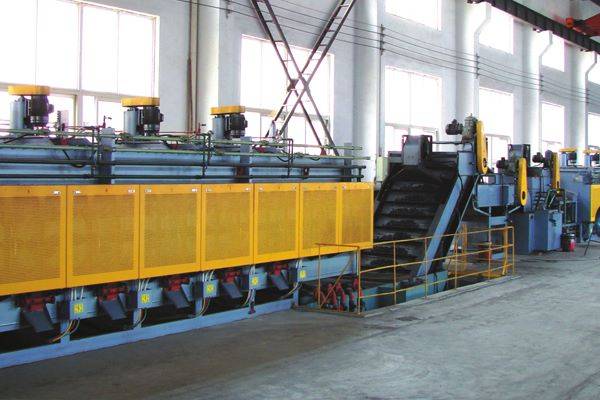
Sealed Box-Type Multi-Purpose Furnace
Sealed box-type multi-purpose furnaces are specialized cyclic heat treatment equipment designed to perform a variety of processes, including carburizing, carbonitriding, and bright quenching. These furnaces are particularly notable for their ability to maintain a controlled atmosphere within the sealed chamber, which is essential for achieving precise and consistent heat treatment outcomes.
One of the key advantages of sealed box-type furnaces is their versatility. They can handle a wide range of heat treatment processes, making them suitable for various industrial applications. For instance, the carburizing process involves introducing carbon into the surface layer of steel to increase its hardness and wear resistance. Similarly, carbonitriding combines the introduction of both carbon and nitrogen into the steel, further enhancing its surface properties. Bright quenching, on the other hand, ensures that the treated parts retain their original surface finish, which is crucial for aesthetic and functional purposes.
The sealed nature of these furnaces not only enhances the accuracy of the heat treatment but also minimizes the risk of contamination from external elements. This is particularly important in industries where precision and consistency are paramount, such as automotive, aerospace, and tool manufacturing.
In summary, sealed box-type multi-purpose furnaces are indispensable tools in the realm of heat treatment, offering a combination of versatility, precision, and reliability that is hard to match with other types of equipment.
Continuous Gas Carburizing Furnace without Canister
The continuous gas carburizing furnace without canister stands out as an indispensable tool in the realm of mass production, particularly for industries requiring extensive heat treatment processes. This furnace is engineered to handle a continuous flow of materials, making it an optimal choice for high-volume manufacturing environments. Its design eliminates the need for canisters, streamlining the process and reducing the potential for operational bottlenecks.
Key Applications and Processes
-
Carburizing: This process involves infusing carbon into the surface of steel parts to enhance their hardness and wear resistance. The continuous gas carburizing furnace excels in maintaining uniform carbon levels across the workpiece, ensuring consistent quality.
-
Carbonitriding: A hybrid process that combines carburizing and nitriding to achieve a dual-enhancement of both hardness and toughness. This furnace's ability to control both carbon and nitrogen levels precisely makes it ideal for this application.
-
Bright Quenching: The furnace's ability to maintain a controlled atmosphere allows for bright quenching, where parts emerge with minimal oxidation and a clean, bright surface finish.
-
Tempering: After quenching, tempering is often necessary to reduce brittleness and improve toughness. The continuous operation of this furnace supports efficient tempering processes, ensuring the final product meets desired mechanical properties.
-
Other Heat Treatments: Beyond the aforementioned processes, this furnace is versatile enough to handle various other heat treatments, including annealing and normalizing, further expanding its utility in mass production settings.
Benefits of Continuous Operation
- Efficiency: The continuous flow of materials through the furnace reduces downtime and increases throughput, making it highly efficient for large-scale operations.
- Consistency: Uniform heating and treatment conditions ensure that each batch of parts meets the same high standards, reducing variability in product quality.
- Scalability: Designed for mass production, this furnace can easily scale to meet increasing demand without significant modifications.
In summary, the continuous gas carburizing furnace without canister is a robust solution for industries requiring consistent, high-quality heat treatments on a large scale. Its ability to handle multiple processes efficiently and its scalability make it a valuable asset in modern manufacturing environments.
Nitriding Furnace
Nitriding furnaces are specialized heat treatment ovens designed to enhance the surface properties of ferrous-based materials, such as alloy steel, titanium, brass, zirconium, and stainless steel. These furnaces are pivotal in the manufacturing of components that demand high fatigue strength, wear resistance, and extended service life, ranging from aircraft parts to medical devices and power generation components.
Nitriding furnaces are primarily categorized into two types: gas nitriding furnaces and ion nitriding furnaces. Both types serve the purpose of introducing nitrogen into the surface of metal parts, a process known as nitriding. This process involves heating the metal above its critical temperature (Ac1) in the presence of a nitrogenous medium, which can be solid, liquid, or gas. Unlike quench hardening, nitriding does not require rapid cooling to achieve a hardened surface.
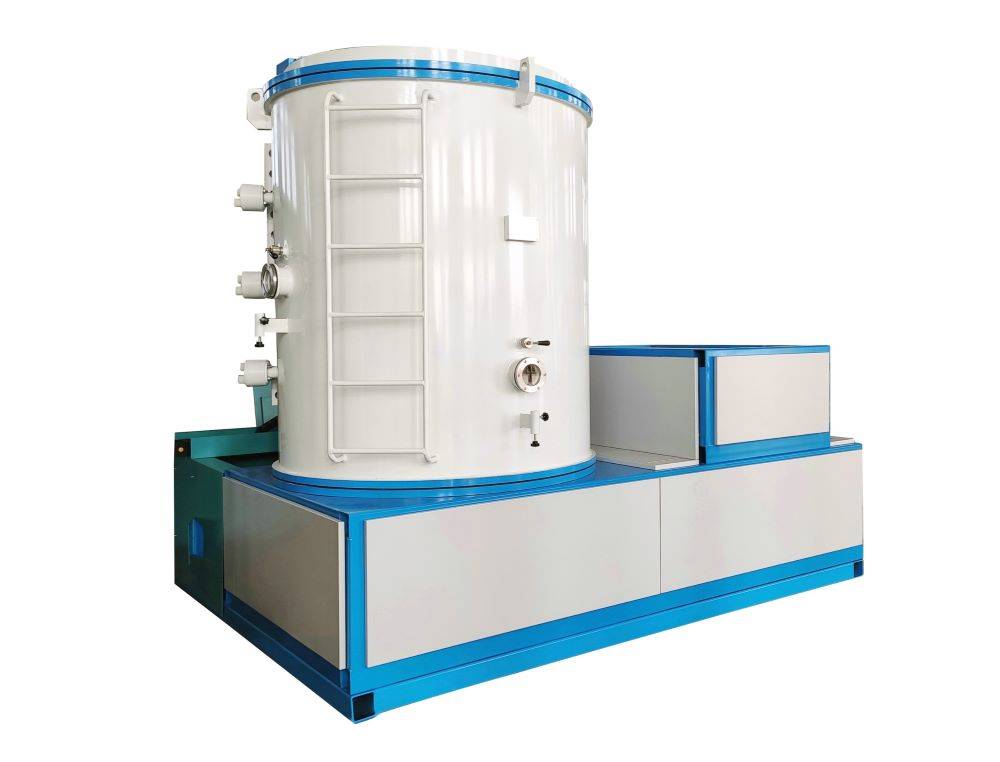
Ion Nitriding Furnaces
Ion nitriding furnaces, also known as plasma nitriding furnaces, offer several distinct advantages over traditional gas nitriding methods. These advantages include:
- Shorter Nitriding Cycles: Ion nitriding can significantly reduce the time required to achieve the desired surface hardness, often by half compared to gas nitriding.
- Simplified Processes: The process is less complex, requiring fewer steps and less stringent controls, which can streamline production workflows.
- Reduced Part Deformation: The controlled environment of ion nitriding minimizes thermal gradients, leading to less warping and distortion of the treated parts.
Gas Nitriding Furnaces
Gas nitriding furnaces, on the other hand, use a gaseous nitrogenous atmosphere to achieve the nitriding effect. While they are generally slower and more complex than ion nitriding, they are still widely used, particularly for applications where the specific characteristics of gas nitriding are advantageous.
Both types of nitriding furnaces play a crucial role in the heat treatment industry, contributing to the production of high-quality, durable metal components that are essential in various industries.
Vacuum Furnace
Vacuum furnaces are specialized heating systems designed to operate in a vacuum or low-pressure environment. Unlike conventional heat treatment methods that expose workpieces to atmospheric air, vacuum furnaces ensure a pristine, contamination-free environment. This is achieved by removing the air from the heating chamber, thereby creating a vacuum. The absence of air or other gases in the chamber prevents oxidation, heat loss through convection, and eliminates a significant source of contamination.
These furnaces are capable of heating materials, typically metals and ceramics, to extremely high temperatures, often reaching up to 3,000 °C (5,432 °F) depending on the material being processed. The maximum achievable temperature and the required vacuum levels are determined by the melting points and vapor pressures of the materials being heated. This high-temperature capability, combined with the controlled vacuum environment, makes vacuum furnaces ideal for a variety of critical processes such as annealing, brazing, sintering, and heat treatment.
The primary advantage of using a vacuum furnace is the high consistency and low contamination levels achieved during these processes. Workpieces that undergo treatment in a vacuum furnace meet stringent standards for oxidation, decarburization, surface roughness, and dimensional accuracy. This makes vacuum furnaces indispensable in industries where material integrity and precision are paramount, such as aerospace, automotive, and medical device manufacturing.
Related Products
- Mesh belt controlled atmosphere furnace
- Double Plate Heating Press Mold for Lab
- Horizontal High Temperature Graphite Vacuum Graphitization Furnace
- Automatic High Temperature Heated Hydraulic Press Machine with Heated Plates for Lab
- Infrared Heating Quantitative Flat Plate Press Mold
Related Articles
- Muffle Furnace: Unraveling the Secrets of Uniform Heating and Controlled Atmosphere
- The Importance of Inert Atmosphere Gases in Furnace Atmospheres
- How Controlled Atmosphere Furnaces Improve Quality and Consistency in Heat Treatment
- Hydrogen Atmosphere Furnaces: Applications, Safety, and Maintenance
- Atmosphere Furnaces: Comprehensive Guide to Controlled Heat Treatment
